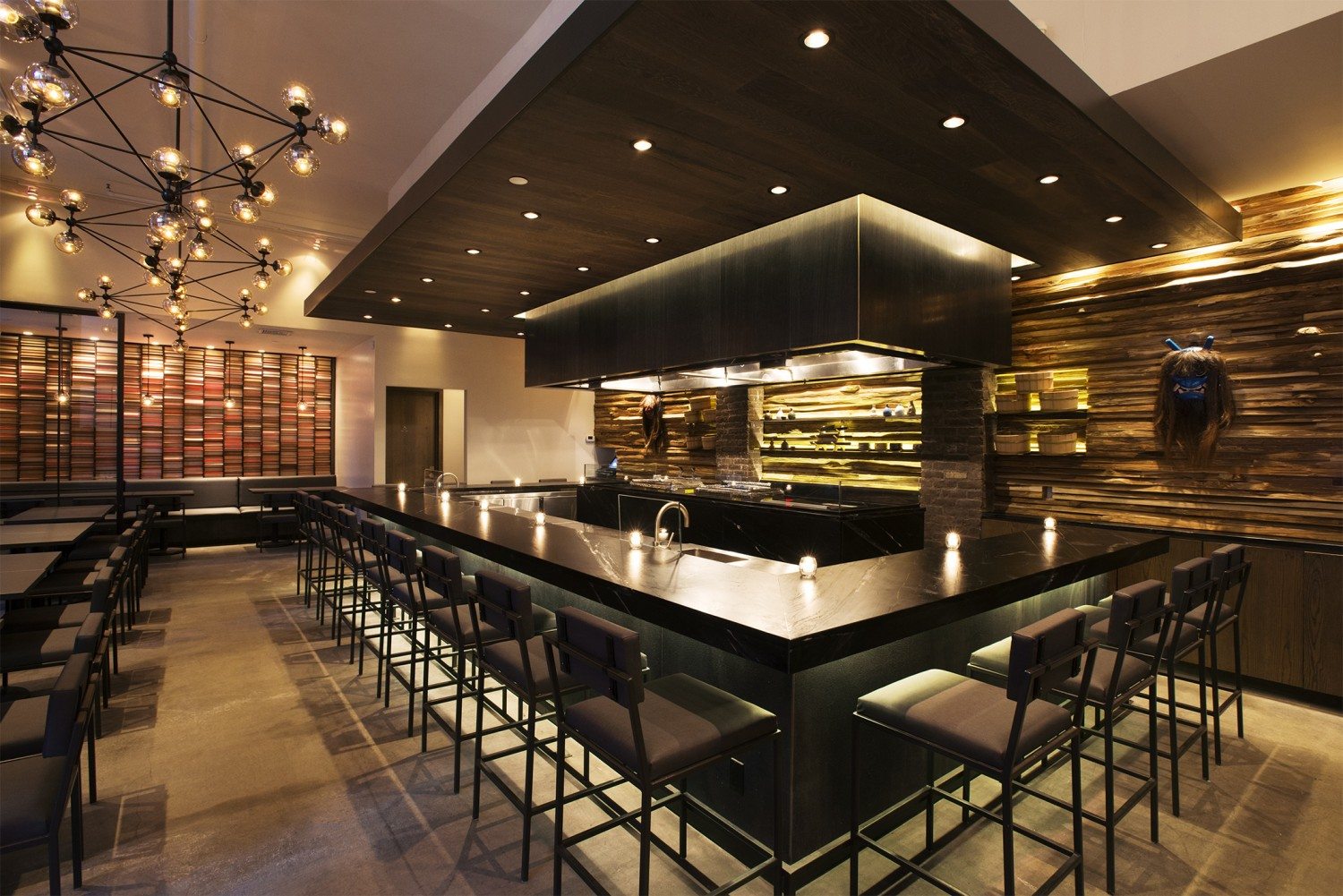Warning: Undefined array key "sharing_networks_networks_sorting" in /var/www/wp-content/plugins/monarch/monarch.php on line 3904
Warning: Trying to access array offset on value of type null in /var/www/wp-content/plugins/monarch/monarch.php on line 3904
The first Japanese restaurant of its kind in the U.S., TEISUI is designed to recreate the experience of a Japanese ryokan hotel in New York City.
In case you don’t know what a “ryokan” hotel is, it’s a hotel where guests go primarily to dine, often in their room, which has a dedicated staff person who brings in a tasting menu course by course. The TEISUI Hotel is the only hotel in the Akita region where the Emperor once stayed, and is located in a remote, isolated and beautiful spot on the Oga Peninsula and situated at the top of a mountain.
It’s a long way from that mountain to 28th Street and 5th Avenue, but — fun fact — TEISUI is on the same latitude, 40 degrees north, as its sister hotel of the same name.
Takuro Hirabayashi, a Japanese entrepreneur who recently turned his focus toward the hospitality industry, set out to designed a dining experience with a seasonal 10-course tasting menu composed of small, elegant dishes.
This includes a “Chicken Sandwich” that combines braised chicken with meringue, sliced daikon and carrot, Japanese pickles (nama-su), pickled pearl onion and micro celery, with an accompanying cup of spicy plum sake; Foie Gras With Chocolate Terrine, which as beautiful as it is tasty, made with vacuum-cooked foie gras with chocolate terrine, red wine sauce and rhubarb chip; a seasonal selection of sushi; and finally Ishiyaki TEISUI soup, created in an elaborate ceremony in which the broth is brought to a rolling boil with the addition of heated Mount Fuji Rocks, which gently heat the Japanese red snapper, King Crab, and Tokyo scallion.
General Manager Yuko Hagiwara tells us more.
What did you have in mind when designing the menu concept for TEISUI?
Yuko Hagiwara: We didn’t think there were any Japanese restaurants in the NoMad Area owned and operated by Japanese people, and believed that yakitori — skewer-style dining — is something that New Yorkers would really appreciate, but haven’t been introduced to thoroughly yet. At the same time, we aim to provide a new style of yakitori that’s unique engaging for our guests, rather than stick solely to the traditional style.
How often does the tasting menu change?
YH: Four times a year. Japanese people tend to work as a team and we are really good at that so all the chefs –including chefs in Japan — will be contributing ideas, and whatever we all think is good will most likely be represented in our new tasting menu for each season. The overall TEISUI style — i.e. the foundation of yakitori and the emphasis on quality and artful presentation — won’t change, but new ideas and ingredients will be included in our dishes. Seasonal vegetables and ingredients will definitely be incorporated, and we’ll be consistently trying to incorporate a mix of American ingredients and lesser-known Japanese specialties that will surprise guests in a great way.
The service was impeccable, and you are one of the New York City restaurants that has a no-tipping policy. What is it that motivates your staff to deliver five-star service?
YH: That is something we are trying to figure out. We try and hire staff that demonstrate an eagerness to learn and become better. They are here to experience a higher level of service and make sure that our guests are happy and enjoying the atmosphere. I am lucky with the staff right now, but I need to figure out how to maintain a high standard of service consistently like it is in Japan.
Tell me about the food trends you’ve seen emerging in Gramercy…
YH: We see a lot of Japanese ingredients in supermarkets and restaurant dishes, much more so compared to 10 years ago. These days, a lot more people seem to be interested in, and respectful of, Japanese food culture.
In the current “food as art” landscape, you guys definitely stand out with photo ready food, down to the plates themselves…
YH: With the explosion of social media, it’s simply become a necessity for restaurants to ensure that their food is beautiful. We have to be competitive about it, because while quality and taste are always most important, aesthetics now play a major role in the how much exposure our restaurant will receive.
How does your own heritage, and your culinary history, lend itself to the flavors on your menu?
YH: Our team of chefs are young and adventurous. They have lived and grown up in Japan and one of them has a French background, but more than anything they want to create flavors that are quintessentially Japanese, while still surprising people.
How do you come up with the inspiration for pairings that seem so different and unusual, like Panna Cotta and Caviar?
We generally work based solely on the taste or our chefs, rather than looking to popular flavor combinations. Take for example our intermission dish — Tomorokoshi Mousse, or soy milk panna cotta — sprinkled with fried grain brown rice and topped with house-made focaccia and Russian ossetra caviar. Our chefs created this based on what tasted pleasant and surprising to them as they experimented. Caviar on a wafer on top of a whipped sweet dessert may seem bizarre at first, but we found it to be quite good, so we ran with it. It’s pure creativity, and it’s very exciting.






